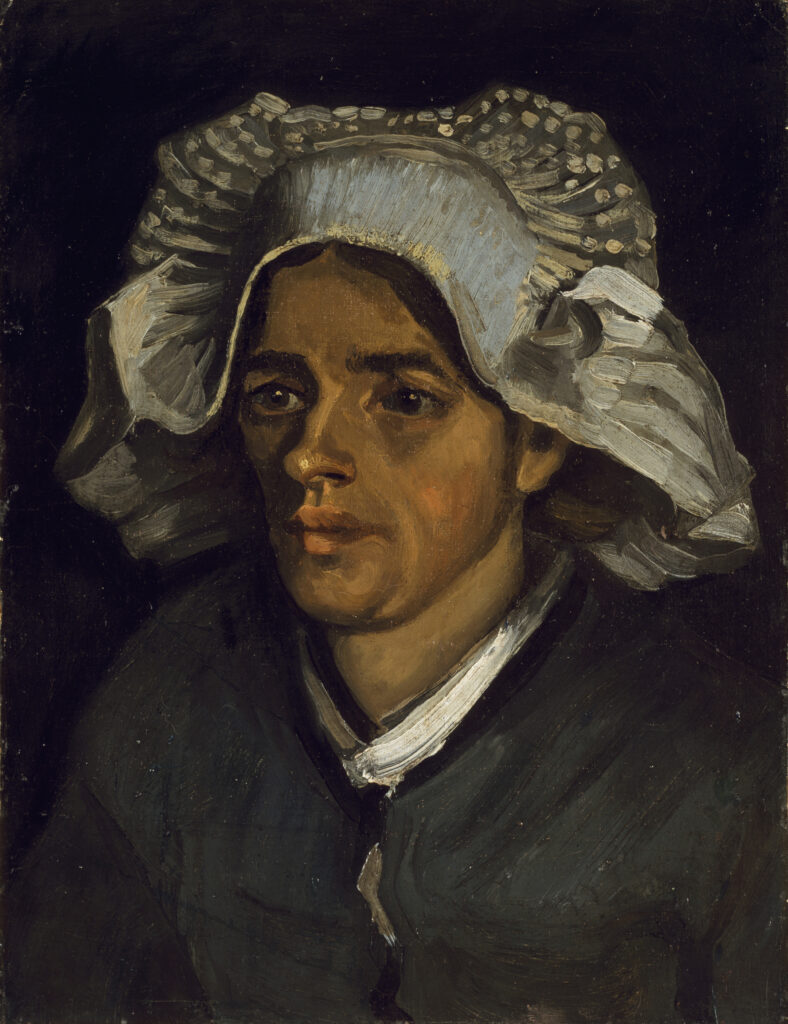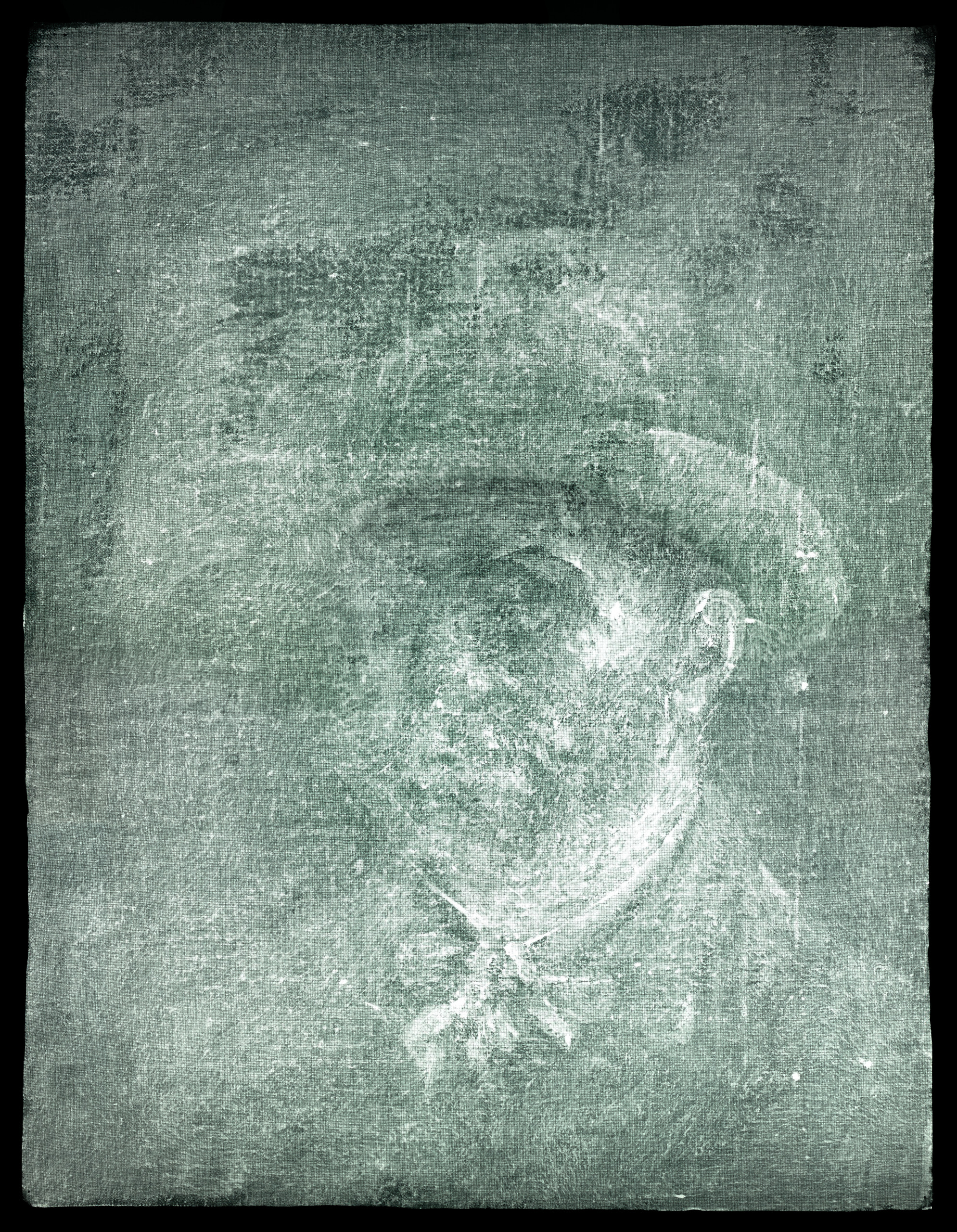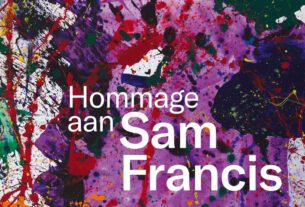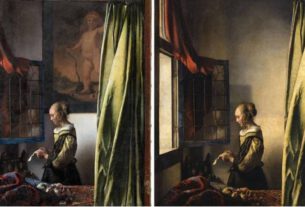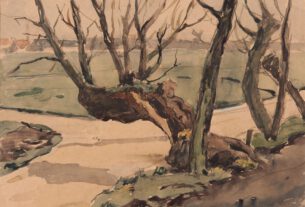A Taste for Impressionism (30 July–13 November) at the Royal Scottish Academy, Edinburgh. Visitors will be able to see the amazing x-ray image for the first time through a specially crafted lightbox at the centre of the display.
Hidden from view for over a century, the self-portrait is on the back of the canvas with Head of a Peasant Woman and is covered by layers of glue and cardboard. NGS experts believe these materials were applied ahead of an exhibition in the early twentieth century. Van Gogh often re-used canvases to save money. However, instead of painting over earlier works, he would turn the canvas around and work on the reverse.
It may be possible to uncover the hidden self-portrait, but the process of removing the glue and cardboard will require delicate conservation work. Research is ongoing as to how that can be done without harming Head of a Peasant Woman. Until then, the world can enjoy the tantalising discovery through a ghostly and utterly compelling x-ray image. It shows a bearded sitter in a brimmed hat with a neckerchief loosely tied at the throat. He fixes the viewer with an intense stare, the right side of his face in shadow and his left ear clearly visible.
Professor Frances Fowle, Senior Curator of French Art at the National Galleries of Scotland, said: “Moments like this are incredibly rare. We have discovered an unknown work by Vincent van Gogh, one of the most important and popular artists in the world. What an incredible gift for Scotland, and one that will forever be in the care of the National Galleries. We are very excited to share this thrilling discovery in our big summer exhibition A Taste for Impressionism, where the x-ray image of the self-portrait will be on view for all to see.”
The condition of the underlying self-portrait is not known but, if it can be uncovered, it is expected to help shed new light on this enigmatic and beguiling artist. Later in date than the Head of a Peasant Woman, the hidden painting is likely to have been made during a key moment in Van Gogh’s career, when he was exposed to the work of the French impressionists after moving to Paris. The experience had a profound effect and was a major influence on why he adopted a more colourful and expressive style of painting – one that is so much admired today.
Head of a Peasant Woman entered the NGS collection in 1960, as part of the gift of an Edinburgh lawyer, Alexander Maitland, in memory of his wife Rosalind. Dating from an early period in Van Gogh’s career, the painting shows a local woman from the town of Nuenen in the south of the Netherlands, where the artist lived from December 1883 to November 1885.
Painted in March or April 1885, it seems to be a likeness of Gordina de Groot (known as Sien) who was a model for Van Gogh’s early masterpiece The Potato Eaters of 1885 (Van Gogh Museum, Amsterdam). Her facial features, white cap and simple work clothes are sketched in oil, using broad brushstrokes and earthy colours typical of French realist artists such as Jean-François Millet, whom Van Gogh greatly admired.
In 1886 the artist moved to Paris to be closer to his brother Theo, who was an early supporter of the Impressionists. Exposed to the work of this revolutionary group of artists, Van Gogh lightened his palette and experimented with broken brushwork. At the studio of Fernand Cormon, where he took classes in painting, he met avant-garde artists such as Henri de Toulouse-Lautrec and Emile Bernard. He also encountered the work of Georges Seurat and Paul Gauguin, under whose influence he began to paint more expressively, using brighter colours.
In the summer of 1887 Van Gogh was experimenting with painting portraits, using friends and also himself as a model. Theo was out of town and unable to assist financially, so Van Gogh re-used canvases to save money. Van Gogh died in 1890 and his brother followed six months later, at which point the artist’s entire oeuvre was left to Theo’s widow, Jo Van Gogh-Bonger.
Probably around 1905, when the Peasant Woman was lent to an exhibition at the Stedelijk Museum, Amsterdam, the decision was made to stick the canvas down on cardboard prior to framing. At this date the Peasant Woman was evidently considered more ‘finished’ than the Van Gogh self-portrait. The painting changed hands several times and in 1923 was acquired by Evelyn St. Croix Fleming, whose son, Ian, became the creator of James Bond. It was not until 1951 that it came to Scotland, having entered the collection of Alexander and Rosalind Maitland.
Once revealed, the hidden self-portrait will be part of a group of several such self-portraits and other works painted on the back of earlier canvases from the Nuenen period. Five examples are in the Van Gogh Museum, Amsterdam. Others in the Metropolitan Museum of Art, New York; the Wadsworth Atheneum Museum of Art, Hartford, Connecticut; and the Kunstmuseum Den Haag. Records in the Van Gogh Museum confirm that in 1929 the cardboard was removed from three of their Nuenen pictures by the Dutch restorer Jan Cornelis Traas, revealing the portraits on the verso.
